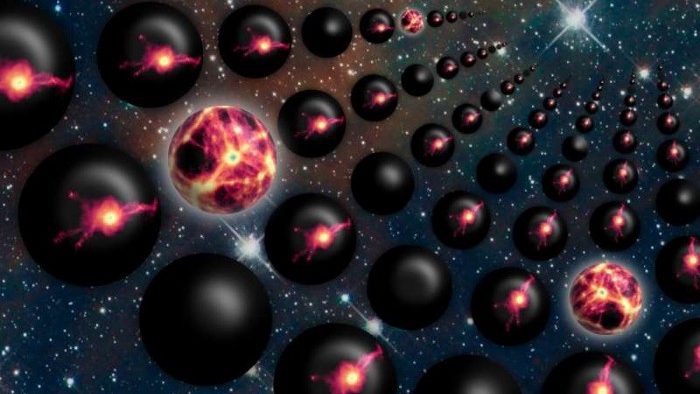What we learn when black holes do the tango

Image Courtesy of Yale University
“They’re the most enigmatic objects in the universe . . . They’re crazy cool.”
Priya Natarajan, a theoretical astrophysicist at Yale University, is talking about black holes. In a recent interview with Science Friday, she addressed new reports from the Laser Interferometer Gravitational-Wave Observatory (LIGO) about the collision of two massive black holes, now believed to be3 billion light years away.
The black holes resulted from the death of two stars, 32 and 19 times larger than our sun. The pair began to tango only after they collapsed into black holes. All of this can be determined from the chirps in the LIGO detectors. (See Brian Greene with Stephen Colbert for an accessible introduction to gravitational waves.)
LIGO is like Siri for scientists like Natarajan and Greene. As the instrument advances and more waves are detected, the answers to elusive questions come closer: Why do we have so much dark matter? How to reconcile relativity and quantum physics? We might have answers sooner than later.
Our quest for new discovery, the satisfaction of curiosity, and the fundamental human hunger to be wowed by the nighttime sky—so well described by Vatican Observatory director Br. Guy Consolmagno—fuel new technologies, which further fuel our curiosity.
And nothing in the cosmos fuels our curiosity more than black holes . . . especially when they collide and “dance,” like those observed by LIGO.
In her conversation with Science Friday, Natarajan describes some of the bizarre properties of black holes, discusses their unique “tango,” and muses how they might give clues to other fundamental mysteries in physics and cosmology. She even addresses how they’re represented in movies. (Christopher Nolan gets a thumbs-up for his depiction of black holes in Interstellar.)
Natarajan concludes the interview with “the thrill that lies in not knowing what we might uncover” as the result of technologies like LIGO.
“I constantly remind myself that just a hundred years ago we did not know of the existence of other galaxies,” she says. “Our cosmic view was limited to just the Milky Way. Maybe we will uncover credible evidence for the existence of other universes in the next 100 years! Before that, I think we will likely discover that we are not alone in the universe—perhaps not another intelligent civilization like our own, but definitely some form of life elsewhere. I just feel so grateful and lucky to be alive now and to have the privilege to be engaged in science.”
The next big cosmological discovery? It might just have something to do with colliding neutron stars.
For more of Natarajan’s popular science, check out her work with the World Science Festival or her book Mapping the Heavens. Feature image courtesy of LIGO/Caltech/MIT/Sonoma State (Aurore Simonnet).
The post What We Learn When Black Holes Do the Tango appeared first on ORBITER.





